ECOLOGY ▪ SCIENCE ▪ EDUCATION
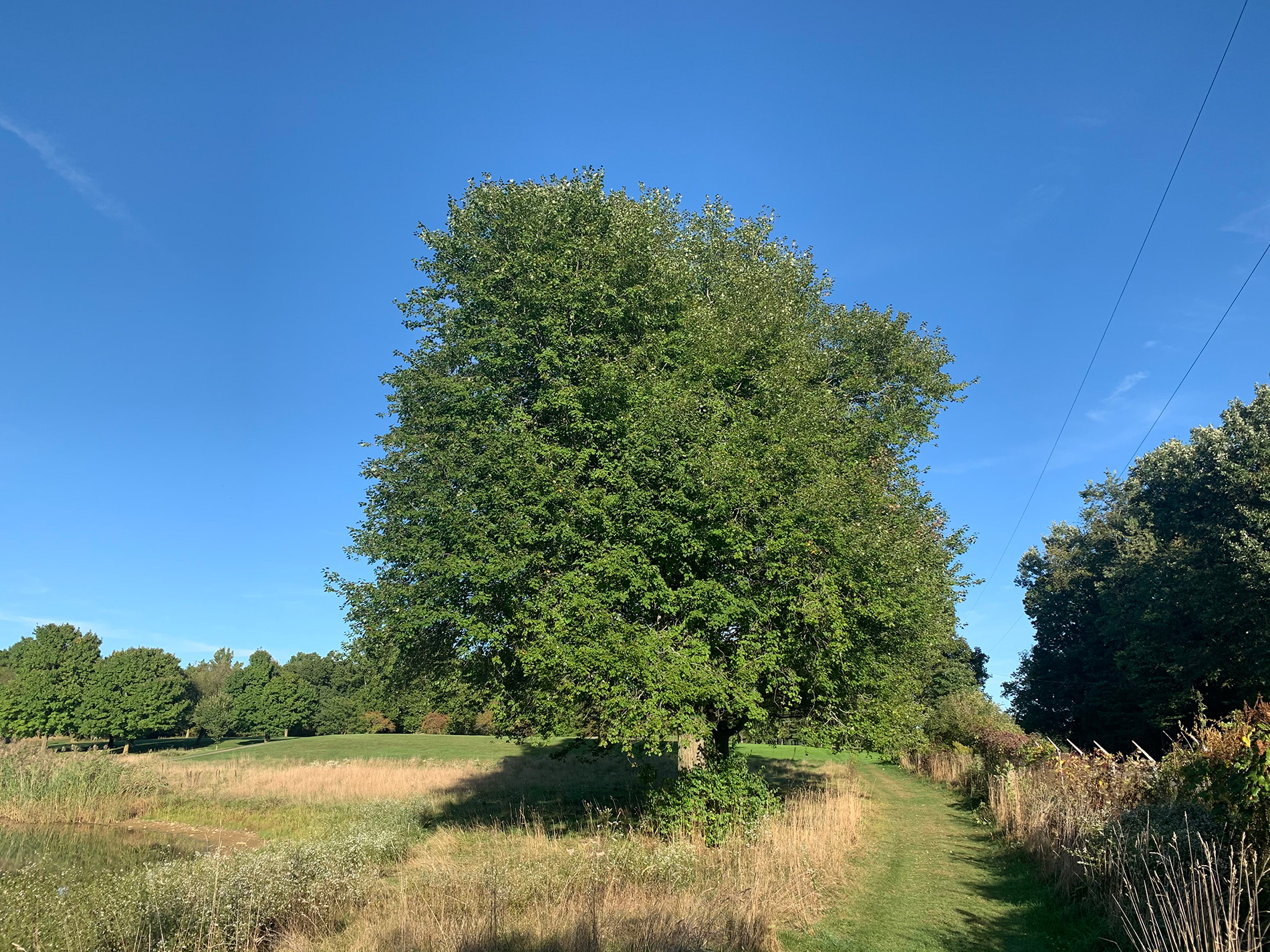
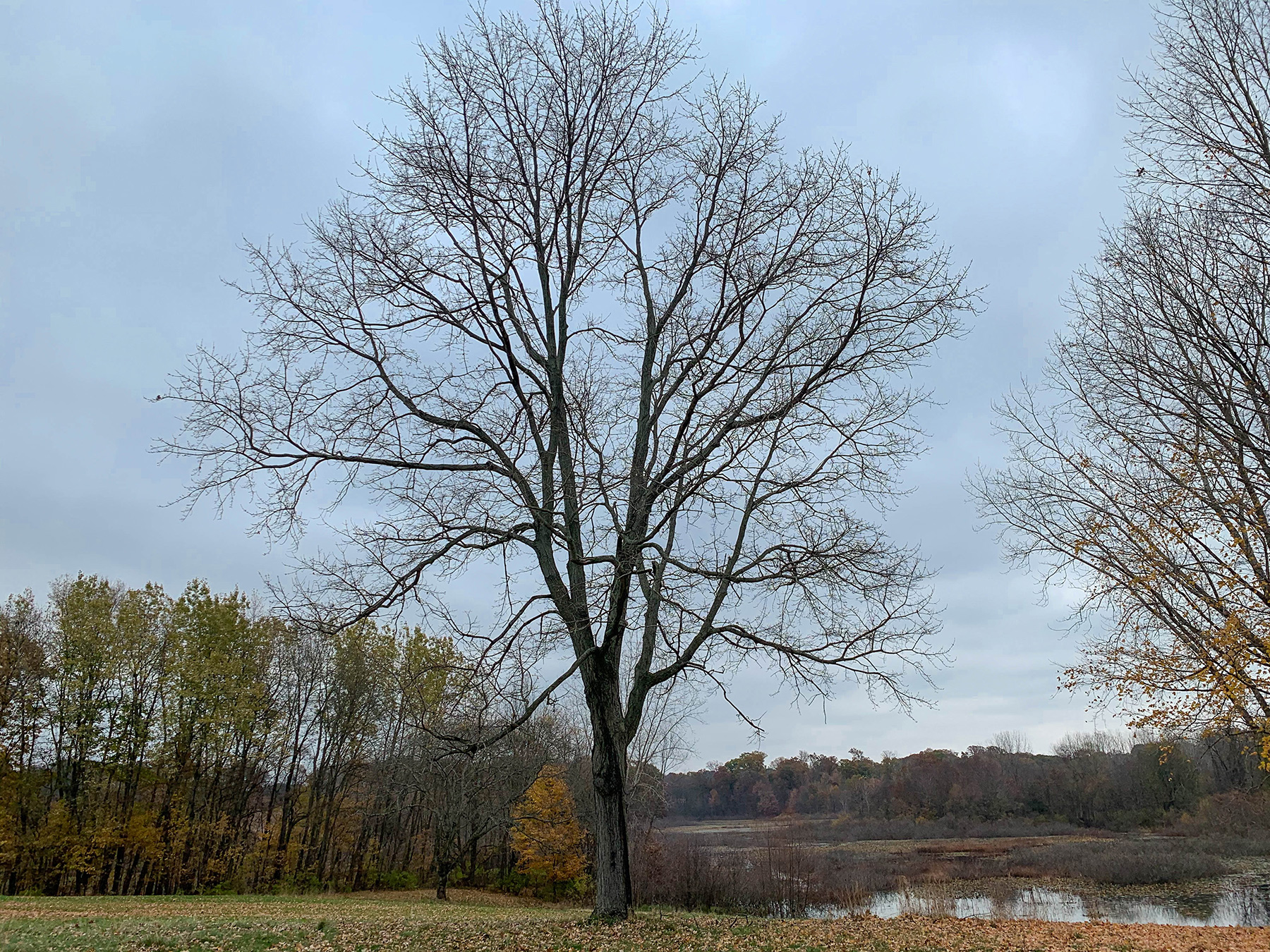
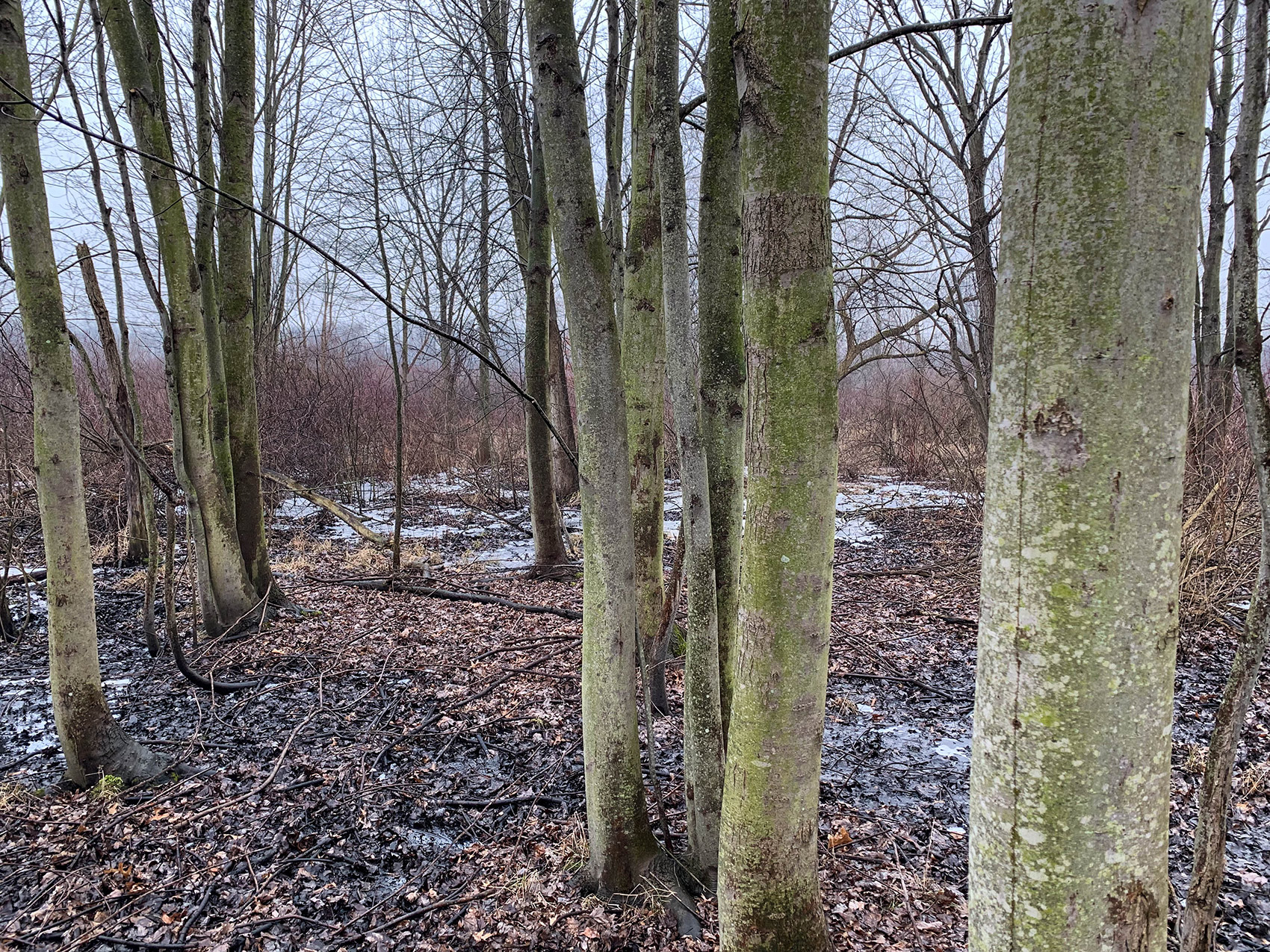
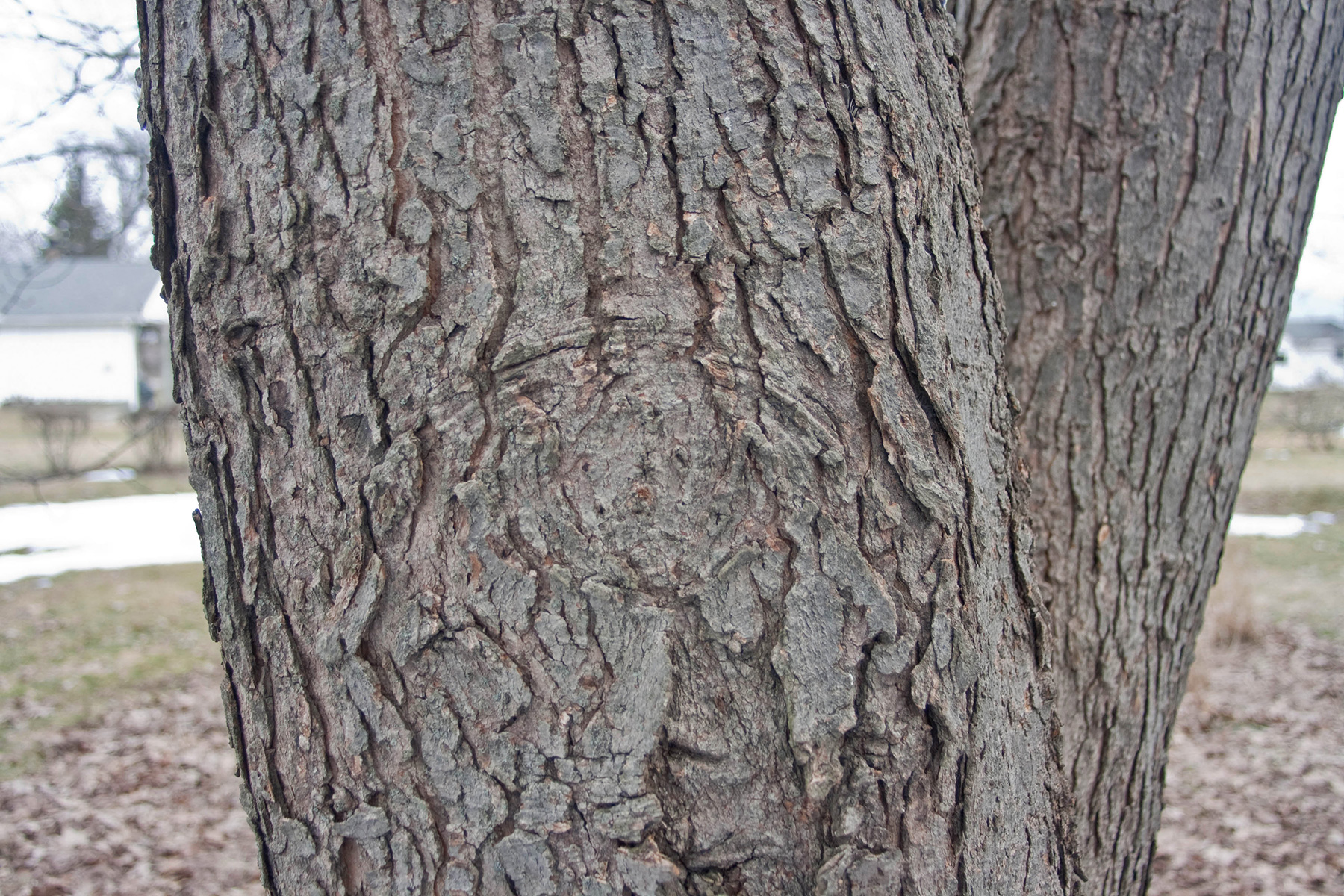
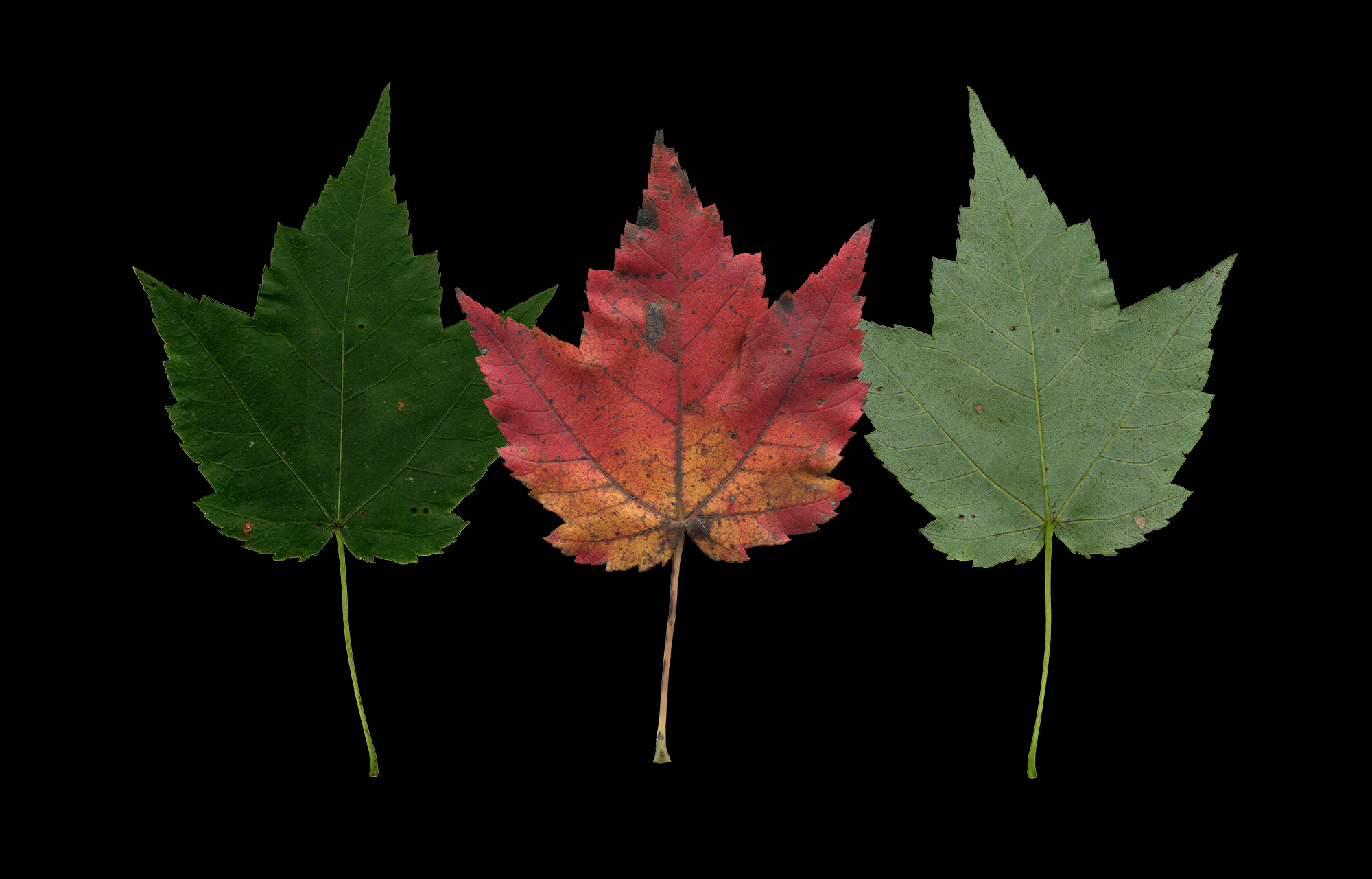
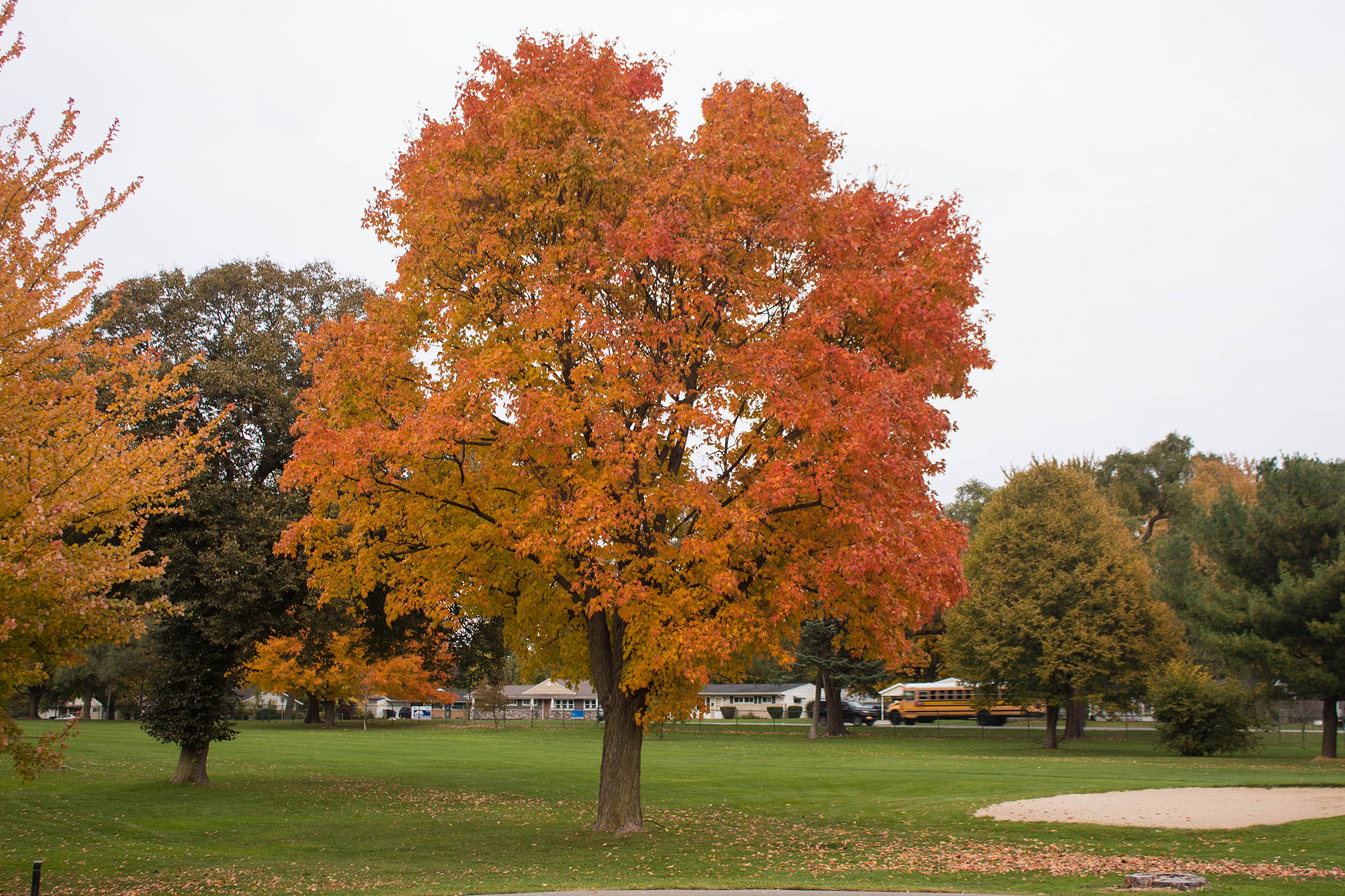





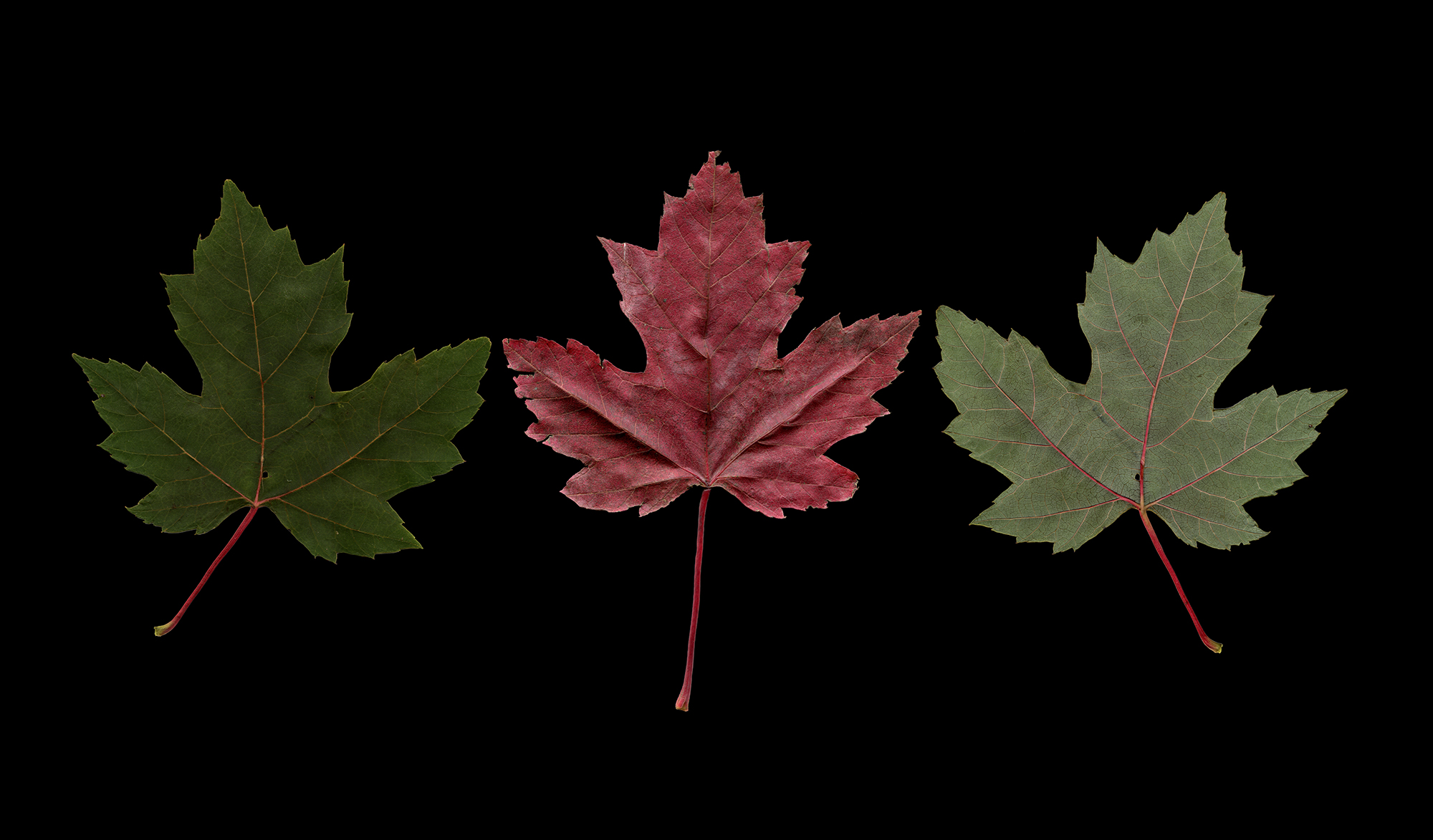

An Indiana Native
Acer: Latin name for “maple tree.”
rubrum: Latin noun for “red.”
ay-sur roo-bruhm
Scarlet maple, shoe-peg maple, soft maple, swamp maple, water maple, white maple.
Mature Size & Appearance: Medium to large trees typically reaching 15–27 m (50–90 ft), but occasionally to 38 m (125 ft). Trunk diameter averages 60–90 cm (2–3 ft) at maturity but can grow as large as 1.5 m (5 ft). The upper branches sweep upward to form an oval to rounded crown.
Bark: On young trees, the bark is light gray, smooth, and thin. As red maples age, their bark becomes increasingly furrowed, turning gray to dark brown, rough, and scaly with maturity.
Leaves: Opposite, simple leaves are typically 7.5–10 cm (3–4 in) long and equally as wide with petioles 5–10 cm (2–4 in) long and sometimes reddish. The 3–5 lobed leaves with v-shaped notches are irregularly toothed. The upper surfaces of the leaves are green and glabrous when mature, while the lower surfaces of the leaves are paler, often whitish, and sometimes pubescent.
Fall Color: Brilliant fall color, one of the showiest maples; leaves turn varying shades of yellows, oranges, and scarlet red.
Twigs: Twigs are slender and smooth with pink pith. Young twigs are green, turning bright red to reddish-brown with age, dotted with white lenticels, and do not emit a foul odor when broken. Leaf scars are crescent-shaped.
Buds: Terminal buds are approximately 3–4 mm (.25 in) long, rounded, and covered with dark red scales; lateral buds are smaller. Flower buds occur in clusters.
Flowers: Unisexual flowers appear before leaves in April–May. Individual trees may be either dioecious or monoecious. Both sexes of flowers are contained in clusters and have 5-lobed calyces and inconspicuous 5-lobed corollas. Male flower clusters are yellowish-orange and sessile, each flower containing 5–8 stamens. Female flower clusters are ruby red and begin as sessile, but develop onto drooping umbels with age. Individual female flowers contain a single pistil with 2 long, arching styles and 5–8 small or aborted stamens. Flowers are primarily wind-pollinated.
Fruit: As with all maples, red maple fruit consists of a single seed with an attached wing called a samara. Red maple samaras, which are one of the smallest of all Indiana native maples at 1.9–2.5 cm (.75–1 in) long, hang in pairs on slender pedicels that are 5–10 cm (2–4 in) long. Typically red, they are sometimes also various shades of greens, yellows, and browns. Red maple samaras germinate immediately upon falling to the ground in May–June.
Life Expectancy: Red maple trees have a lifespan of 75–125 years or more. Growth is rapid for the first 20–30 years and trees may bear fruit in as little as 5 years (Illinois 2017).
Key Characteristics: When identifying red maple, look for the following characteristics:
Similar Species: In Indiana, red maple (Acer rubrum) is one of five widespread maple trees with palmately-lobed, simple leaves. Silver maple (A. saccharinum) is the most visually and genetically similar. Red and silver maples occur in similar habitats, both are known commercially as “soft maples,” and the two occasionally hybridize. Distinguishing silver maple from red and other maples can be done by utilizing the key characteristics above.
Hybrid
Freeman's maple (Acer x freemanii) is a naturally occurring hybrid between red maple (Acer rubrum) and silver maple (Acer saccharinum).
Naturally Occurring Varieties
The Integrated Taxonomic Information System (ITIS) recognizes three varieties of red maple:
With the broadest range of any of the North American maples (Smith 1961), except for the Great Plains, red maple is native throughout the eastern United States and southeastern Canada. Although Charles C. Deam wrote that red maple is “found in all parts of Indiana” (Deam 1953), the western edge of Indiana represents the area where the eastern deciduous forest met the Great Plains. No historical herbarium records exist from Benton, Newton, Parke, or Vermillion counties, and the USDA historical range map backs up the belief that red maple would have been historically absent from those counties. As an ornamental tree, red maple is widely cultivated and planted outside of its native range, including throughout Europe, since the 1600s (Majestic Trees 2020).
Acer rubrum — Native Range
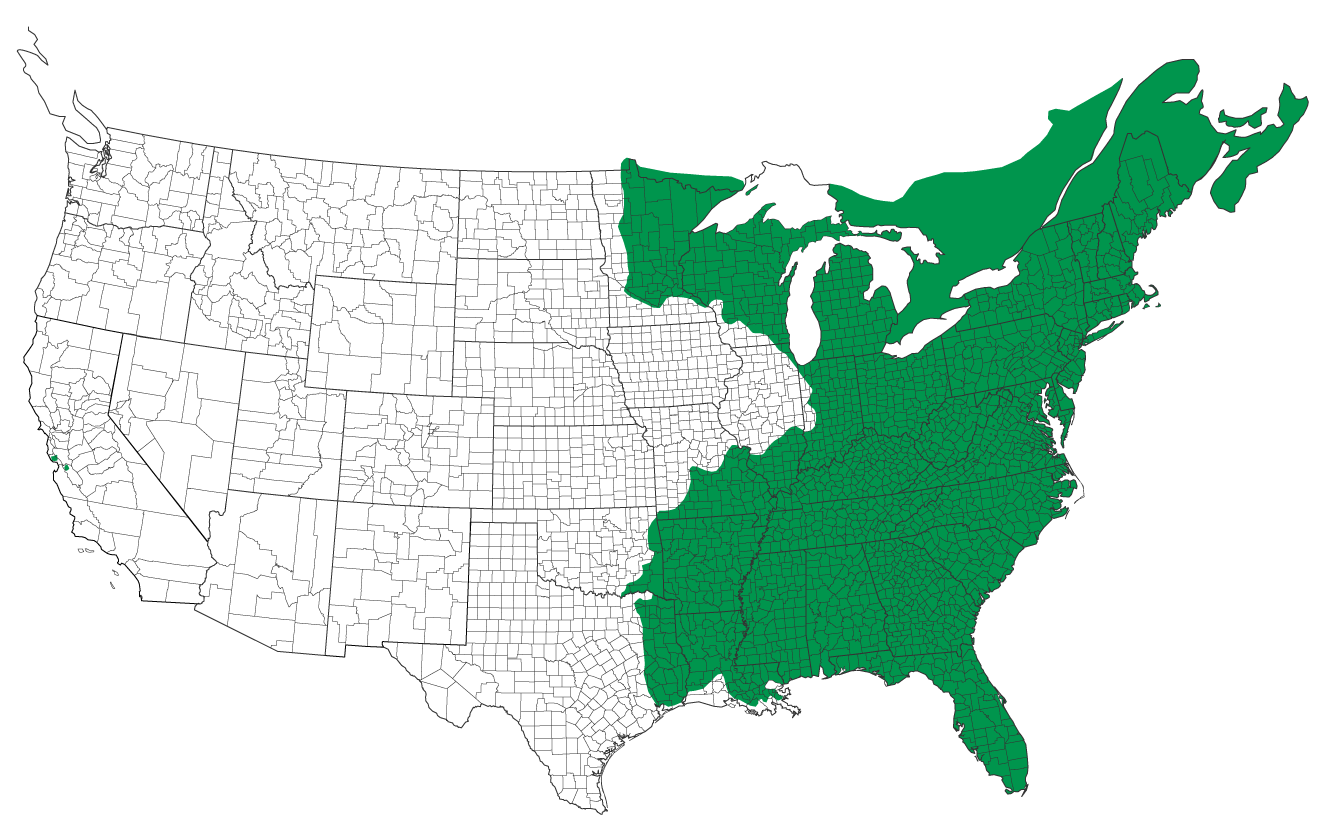
 |
Species native and present in county |

Red maple is primarily a lowland species of rich-soiled bottomlands, flatwoods, riverbeds, swamps, and floodplains. It is found less frequently in uplands, but its beauty and tolerance of a range of conditions, including shade and poorly drained soils, have led to widespread ornamental planting throughout the state. Red maple is intolerant of fire, which likely explains its historic absence along much of the western edge of Indiana.
Culinary: Native American tribes had several known culinary uses for the red maple tree. Many tribes tapped the trees for sap, which they boiled down into sugar. The Abnaki used this sugar to sweeten foods, and the Algonquin in Quebec used a slightly less condensed, more syrup-like connotation to sweeten sauces and relishes (Moerman 1998). Additionally, the bark was dried, crushed, and then sifted by the Iroquois, who used the resulting flour to produce breads and cakes (Moerman 1998).
Functional: In addition to being used for furniture, building material, and decorative carvings, native tribes adapted various functional uses for red maple. The Cherokee, Malecite, and Micmac tribes made baskets from red maple fibers. The Iroquois and the Seminole carved the wood into bowls and cooking utensils. The Potawatomi boiled the bark of red maple in water to deodorize animal traps, and the Seminole used red maple for arrowheads and ox yokes (Moerman 1998).
European settlers also used the wood for furniture and cooking utensils. Plus, they produced ink and a dark blue dye by adding copper to a substance extracted from red maple bark, which they used for coloring linens, hats, and shoes (Peattie 1948).
Medicinal: Native Americans used the bark of red maple for an array of medicinal purposes. The Iroquois created a substance that they used as a blood purifier. The Cherokee, Koasati, and Seminole used products made from the bark as a dermatological aid. The Cherokee, Iroquois, Ojibwa, and Potawatomi used a red maple bark decoction as an eyewash, and the Cherokee also used it to treat cramps, dysentery, and measles(Moerman 1998).
Culinary: Although red maple has the third-highest sugar concentration of the Indiana native maples (Conger 2019), due to their slow flow and short sap season, they are not considered commercially viable. The inner bark can be dried, cooked, then eaten (PFAF 2019), and the samara seeds can be eaten raw, steamed, roasted, and ground into flour (McCarthy 2015).
Functional & Economically: Along with silver maple (Acer saccharinum), red maple is sold commercially as “soft maple.” Although less desirable than the so-called “hard maples” of sugar maple (A. saccharum) and black maple (A. nigrum), the wood of red maple is still economically valuable. Various uses for red maple wood include furniture, cabinetry, veneer, flooring, crates/pallets, paper, interior trim, woodenware, musical instruments, gunstocks, clothespins and clothes hangers, plywood, and railroad ties. Red maple wood is also used for fuel and in the production of charcoal. Occasionally, the sapwood of red maple contains highly coveted, naturally occurring visual aberrations known by woodworkers as quilting or curling.
Medicinal: The authors have found no additional contemporary medical uses for red maple.
Landscape: Given the softness of their wood and their relative intolerance of pollution, salt, and drought, red maples have become increasingly uncommon as street trees. However, with their brilliant red flowers ushering in the spring, their scarlet fall foliage signaling the onset of autumn, and their tolerance for soils with poor drainage, given the right location, red maples can be strikingly beautiful shade and specimen trees.
To fill the demand for attractive, fast-growing trees for suburban landscapes, plant breeders have developed many cultivars of red maple. Some of them are as follows:
The authors have found no lore that is specific to red maple.
The foliage of red maple, particularly when wilted, is considered toxic to horses and unsuitable for browsing (Dunkel 2019).
The only known Indiana place names for the red maple tree are roads and streets located in Batesville, Fishers, Greenwood, Indianapolis, Muncie, Plymouth, South Bend, and Zionsville.
Putnam County: Owned by Shelia Hubble, 9301 East County Road 600 South, Coatsville, IN 46121 — Circumference 246 in, Height 84 ft, Crown 97 ft.
In Indiana, red maple is a source of food to most of the same fauna as other native maples, 11 birds, 11 mammals, including at least 110 species of native moths, and various additional insects. Cavities in mature trees are utilized as nesting locations by eastern screech owls, pileated woodpeckers, wood ducks, northern flickers, tree swallows, fox squirrels, gray squirrels, red squirrels, and tree-roosting bats (Hilty 2020). Young red maple trees are a favorite nesting site of Prairie Warblers (Martin et al 1961).
| Known Mammal and Bird Associates in Indiana | ||
| Taxonomic Name | Common Name | Parts used |
|---|---|---|
| Class Aves (Birds) | ||
| Bonasa umbellus | Ruffed Grouse | buds, twigs, and seeds |
| Coccothraustes vespertinus | Evening Grosbeak | seeds, buds, and flowers |
| Colinus virginianus | Northern Bobwhite | buds, twigs, and seeds |
| Haemorhous purpureus | Purple Finch | seeds, buds and flowers |
| Meleagris gallopavo | Wild Turkey | buds, twigs, and seeds |
| Pheucticus ludovicianus | Rose-breasted Grosbeak | buds, twigs, and seeds |
| Poecile carolinensis | Carolina Chickadee | seeds, buds, and flowers |
| Sitta canadensis | Red-breasted Nuthatch | buds, twigs, and seeds |
| Sphyrapicus varius | Yellow-bellied Sapsucker | sap |
| Spinus tristis | American Goldfinch | seeds, buds, and flowers |
| Zonotrichia albicollis | White-throated Sparrow | seeds, buds, and flowers |
| Class Mammalia (Mammals) | ||
| Castor canadensis | American beaver | seeds, flowers, bark, and twigs |
| Glaucomys volans | southern flying squirrel | seeds, flowers, bark, and twigs |
| Microtus pennsylvanicus | meadow vole | seeds |
| Odocoileus virginianus | white-tailed deer | twigs and foliage |
| Peromyscus leucopus | white-footed mouse | seeds |
| Procyon lotor | North American raccoon | seeds, flowers, bark, and twigs |
| Sciurus carolinensis | eastern gray squirrel | seeds, flowers, bark, and twigs |
| Sciurus niger | fox squirrel | seeds, flowers, bark, and twigs |
| Sciurus vulgaris | red squirrel | seeds, flowers, bark, and twigs |
| Sylvilagus floridanus | eastern cottontail rabbit | seeds, flowers, bark, and twigs |
| Tamias striatus | eastern chipmunk | seeds |
| Ursus americanus | black bear (extirpated) | seeds, flowers, bark, and twigs |





Foliage Diseases
Stem Diseases
Vascular Diseases
Trunk rots
Misc. Pathology
In addition to the primary bibliography, the authors have referenced the following sources:
Cook W. 2013. Drummond’s Red Maple (Acer rubrum var. drummondii). Carolinanature.com. [accessed 2020 Jan 10]. https://www.carolinanature.com/trees/acrud.html
Dunkel B. 2019. Acer - an overview. Sciencedirect.com. [accessed 2019 Dec 28]. https://www.sciencedirect.com/topics/pharmacology-toxicology-and-pharmaceutical-science/acer
McCarthy M. 2015. Maple’s Other Delicacy. Northern Woodlands. [accessed 2019 Dec 20]. https://northernwoodlands.org/outside_story/article/maples-other-delicacy
Majestic Trees. 2020. Majestictrees.co.uk. [accessed 2020 Jan 10]. http://www.majestictrees.co.uk/tree-shrub/56-acer-rubrum
Santamour F, Jacot McArdle A. 1982. Checklist of cultivated maples. I. Acer rubrum L. Journal of Arboriculture 8.
Thompson, D. c2020. How to Propagate Red Maples. Home Guides, SF Gate. [accessed 2020 Jan 13] http://homeguides.sfgate.com/propagate-red-maples-23902.html